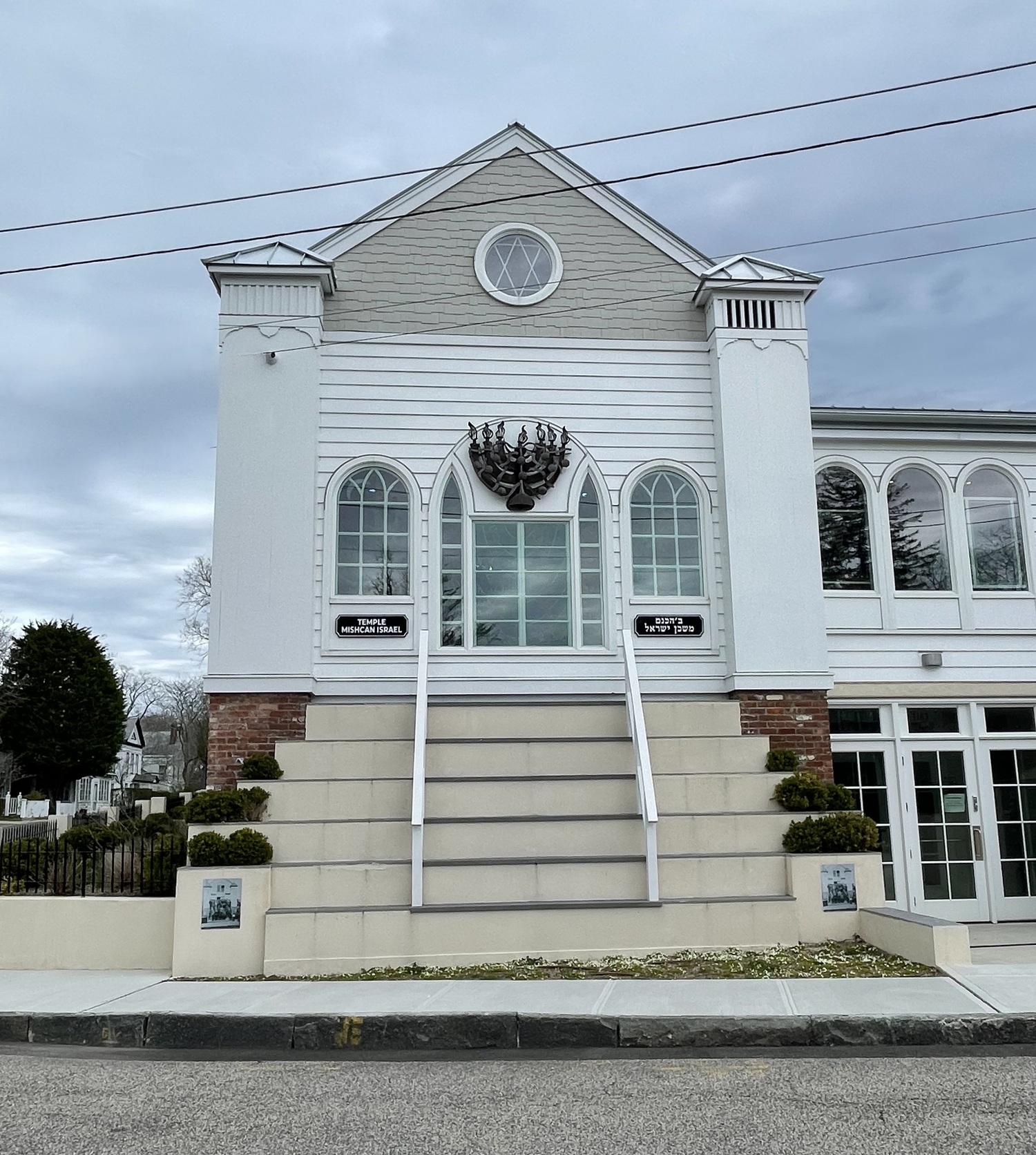
For any architect, the renovation and addition to a temple like Adas Israel would be a daunting task. Developing a complex program of requirements to meet the needs of a growing congregation with upgrades to the physical plant, handicapped access, worship and community spaces, and the addition of classrooms and a library on a tight site posed a design challenge for architect Lee Pomeroy. He developed a scheme, approved by the temple, but before he could draw up the construction drawings, Pomeroy became ill and passed away.
The temple interviewed several architects to complete the project and hired the Water Mill firm of Chaleff & Rogers to complete the project. Ironically, Bill Chaleff had been a student of Pomeroy when he attended Cooper Union.
How to work out the pieces of the puzzle seemed untenable initially because there just wasn’t enough space for the needs and wants of the congregation. The existing temple, which opened in 1898, actually sits beyond the property line. The original entrance, facing Atlantic Avenue, featured a flight of steps leading directly into the sanctuary. To expand the sanctuary, a 12-foot addition was added to the front of the building. Chaleff recreated the original corner pillars on the façade including their triangular caps all lost many years before. At first glance, it looks like the staircase remained but it is really an illusion created by the use of the siding. The building with additions, painted white originally, remains true to its historic color scheme.
The new entrance to the structure is actually on the side of the building according to the Pomeroy design. It’s a bit hard to find given that there are several stairwells, a side door and a ramp from which to select. One enters through glass doors leading to a glass stairwell going up to the main level as well as to the lower level with a custom wood railing gently rounding the corners at level changes. There is an elevator by this entry and another on the main level that address both service and handicapped access for the building.
Where it becomes even more interesting is on the main level, which opens to a community room featuring a barrel-vaulted, coffered ceiling with wood panels held in place by gravity. Chaleff noted that these panels were designed to be removable so they can replaced by stained glass in the future. Separating the community room from the sanctuary is a wall of sturdy folding panels designed to fit into concealed wall pockets. When opened the two spaces become one and afford more flexibility for larger gatherings.
On the basement level, there are three classrooms, including a library and the original mikvah (water bath) used by Orthodox women monthly for ritual cleaning. Today’s Reformed congregation doesn’t use the bath but it’s contained in a glass enclosure and remains a part of the building’s history. These spaces are also separated by folding panels, allowing for one large space as well.
Still strapped for space, Chaleff realized that a tall, sub-basement would be needed to house the heating, ventilation and air conditioning plant along with the electrical controls.
Chaleff was also very conscious of the weaving of natural light into the public spaces with a judicious placement of windows. One doesn’t really have a sense that there are a lot of them and yet, the spaces are bright and cheerful. Light is important in the Jewish faith as it represents God’s eternal presence and bond with the Jewish people. An eternal light at a temple typically guards the ark housing the Torah scrolls.
And, of course, the stained glass windows in the sanctuary designed by Sag Harbor artist Romany Kramoris, are illustrative of Jewish symbolism. Panel themes for example, include the Tree of Life — rebirth, new life, a cleansing, the Exodus — the passage of the Jews to the Holy Land, the Holocaust, and the Lion of Judah — symbolizing the Tribe of Judah, all Jews and the strength of the Jews as the Chosen people. These panels, completed between 1976 and 1997, provide an iconographic panorama of Jewish history.
The construction of the temple’s renovation and addition became problematic because of COVID and the supply chain. The original bid budget matched the estimate of $6 million but grew to $7.3 million due to shortages and material substitutions. According to Bill Chaleff, this project may well have been the most difficult project he has ever done despite the fact that he had an excellent relationship with both the client and the builder RLW4 (Roy L. Wines IV).
Sag Harbor’s Temple Adas Israel, originally known as Mischan Israel, is the oldest synagogue on Long Island. It needed to grow, retain its identity, and yet remain a hometown place of worship. Sag Harbor, despite the enormous changes having taken place in recent years, will never be glitzy fancy. Sometimes, a project becomes an act of perseverance. Temple Adas Israel still fits this place and the community it supports.
Anne Surchin is an East End architect and writer, vice chair of the Southold Historic Preservation Commission and co-author with Gary Lawrance of “Houses of the Hamptons 1880-1930.”